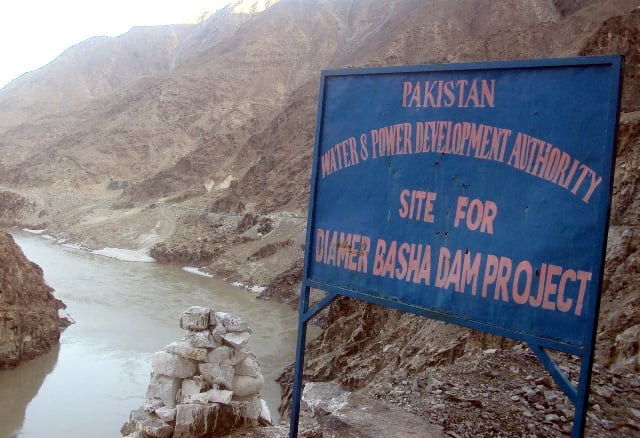Additional incentives to Diamer-Bhasha Dam Project affectees
WAPDA to provide alternate accommodations in Thore Valley.

The provision of temporary accommodation, in accordance with the weather requirements of the area, is in addition to the full payment for the land and establishment of permanent townships in five years.
Wapda, during a recent meeting, took the decision; 131 families whose lands have been acquired for establishing Wapda’s offices and residential structures will benefit from it. This momentous decision will provide adequate shelter to the affectees and will also be compliant with the ‘safeguard policies’ of donors.
An amount will be paid to each family – to be released in three installments – for the construction of alternate accommodation comprising a bedroom and toilet. The first installment, through cheque, will be delivered within 10 days. Wapda has also decided to provide free medical coverage through an ambulance and doctors to not only the affected families, but also to far flung villages of the Diamer district. It was also decided that a poultry scheme for women will be launched, besides the establishment of veterinary camps in the area. In order to facilitate the locals, pony tracks will also be developed in the valley.
The Diamer-Bhasha Dam Project was formally initiated by the prime minister in October last year and will cost an estimated $12 billion. Land acquisition is still in progress, while 12 contracts for construction of Wapda offices, colonies, contractor’s camps, infrastructure, etc. in the project area have already been awarded.
Published in The Express Tribune, February 22nd, 2012.
p>There are reports that the Planning Commission might take him up on the offer. It is considering assigning the job either to him, or to the Pakistan Institute of Development Economics.
The paper also challenges the poverty estimates of the Musharraf regime, terming them incorrect. Instead, the study tries to establish that from 1999 to 2007-08, the incidence of poverty has increased by 3.8 percentage points from 30 percent in 1998-99 to 33.8 percent in 2007-08, with an additional 16 million people entering the category of poor over the period.
Musharraf’s government had claimed that it reduced the percentage of population below the poverty line from 34 percent in the year 2000-01, to 23 percent in the year 2004-05; that is, a reduction of 11 percentage points. This was meant to show that almost a third of Pakistan’s poverty stricken populace had been brought up within a period of four years. The author argues that if this was true, it would be one of the most remarkable economic achievements in the history of developing countries; including the Soviet Union under Stalin, and China under Mao. Even India had managed only a 10 percentage point reduction in poverty with its high average annual growth rate of 8 per cent.
The study also states that an analysis of the sources of growth, during the period 2000-01 to 2004-05, shows that the composition of growth during the period was pro-rich rather than pro-poor.
GDP growth during the period was overwhelmingly pro-rich since the sectors which contributed it were neither producing goods for the poor nor directly providing employment to them, claims the author. In fact, labour force survey data from the government shows that unemployment rates rose sharply from 6.1 per cent in 1999 to 8.3 per cent in 2004. Therefore, the nature and composition of GDP growth during this period could not be expected to have substantially reduced poverty, says Hussain.
Hussain said that the regime’s decisions to take 2001 as the base year for estimating poverty and measuring inflation on the basis of the Consumer Price Index, instead of inflation data of Pakistan Living Standard Measurement Survey (PLSM), led to the incorrect poverty estimates.
Taking the base year as 2000-01, which was plagued by bad harvests, and comparing it to the year 2004-05, which was comparatively much better, exaggerated the magnitude of poverty reduction. Similarly, the then government’s poverty estimate used an inappropriate inflation rate based on the consumer price index, which covered only 16 urban centers. It did not take into account prices in rural areas where the majority of the poor reside. Inflation rate data based on both urban and rural areas had been available with the PLSM survey but was never used, the study opines.
Published in The Express Tribune, February 22nd, 2012.



















COMMENTS
Comments are moderated and generally will be posted if they are on-topic and not abusive.
For more information, please see our Comments FAQ